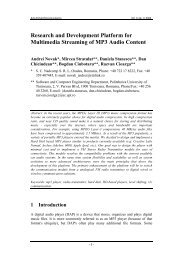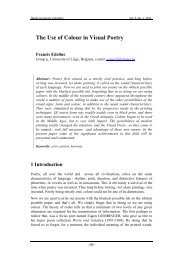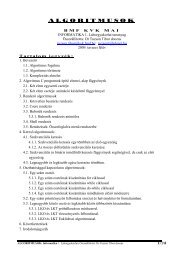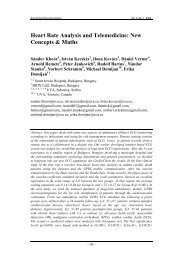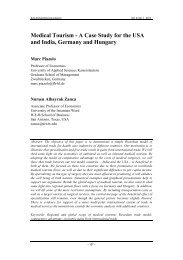RTOS Program Models Used in Embedded Systems
RTOS Program Models Used in Embedded Systems
RTOS Program Models Used in Embedded Systems
You also want an ePaper? Increase the reach of your titles
YUMPU automatically turns print PDFs into web optimized ePapers that Google loves.
J. Kopják et al. <strong>RTOS</strong> <strong>Program</strong> <strong>Models</strong> <strong>Used</strong> <strong>in</strong> <strong>Embedded</strong> <strong>Systems</strong><br />
/* Task function of task #2*/<br />
void vTask2 ( void )<br />
{<br />
mTurnOnLED( 0 ); // Turn On LED #0 (The task starts his runn<strong>in</strong>g)<br />
mToogleLED( 2 ); // Toggle LED #2 (The mission of the task)<br />
mTurnOffLED( 0 ); // Turn Off LED #0 (The task stops his runn<strong>in</strong>g)<br />
}<br />
Our <strong>in</strong>itial kernel is very simple. Next code example shows our <strong>in</strong>itial, not timed,<br />
kernel.<br />
/* endless loop */<br />
while (1)<br />
{<br />
vTask1(); // Call Task1 function<br />
vTask2(); // Call Task2 function<br />
}<br />
The Figure 3 illustrate the result of program runn<strong>in</strong>g is simulator. In picture you<br />
can f<strong>in</strong>d 4 l<strong>in</strong>es. The l<strong>in</strong>e with label “Task #1” is <strong>in</strong> high level when the task #1 is<br />
runn<strong>in</strong>g, and is <strong>in</strong> low level when the task is “no runn<strong>in</strong>g” state. The l<strong>in</strong>e with<br />
label “Task #2” is demonstrate the actual state of the task #2 (the conditions of<br />
high and low level is similar like <strong>in</strong> previously described l<strong>in</strong>e). L<strong>in</strong>e with label<br />
“PIN #1” and l<strong>in</strong>e with label “PIN #2” shows the output of Task #1 and Task #2<br />
(toggle LEDs on output p<strong>in</strong>s).You can see <strong>in</strong> the figure, that the both tasks are<br />
runn<strong>in</strong>g always <strong>in</strong> circa half of the processors time.<br />
Figure 3<br />
Result of runn<strong>in</strong>g program write <strong>in</strong> traditional cooperative multitask model<br />
To create a timed task call<strong>in</strong>g we need a one timer global timer, who create for as<br />
an cont<strong>in</strong>ues global time <strong>in</strong> tick. Operat<strong>in</strong>g system usually measure the time <strong>in</strong><br />
tick. The tick counter is 16 or 32 bit long unsigned variable, but it can be an 8 bit<br />
counter <strong>in</strong> very small systems. We used 16 bit wide architecture to test our kernel,<br />
therefor our tick counter is 16 wide too. In this example the timer <strong>in</strong>crease the<br />
value of tick counter <strong>in</strong> every one millisecond.<br />
We need an array list too, where are the task descriptors. One element of array is a<br />
structure, which represents one task. The descriptor structure has three fields, the<br />
– 166 –






